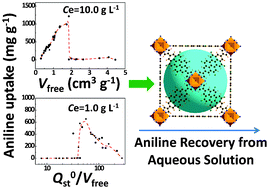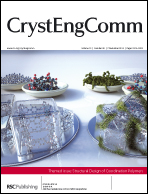Computational design of metal–organic frameworks for aniline recovery from aqueous solution†
Abstract
In this work, molecular simulations combined with experimental measurements were conducted to screen candidate metal–organic frameworks (MOFs) for

- This article is part of the themed collection: Structural Design of Coordination Polymers

 Please wait while we load your content...
Please wait while we load your content...